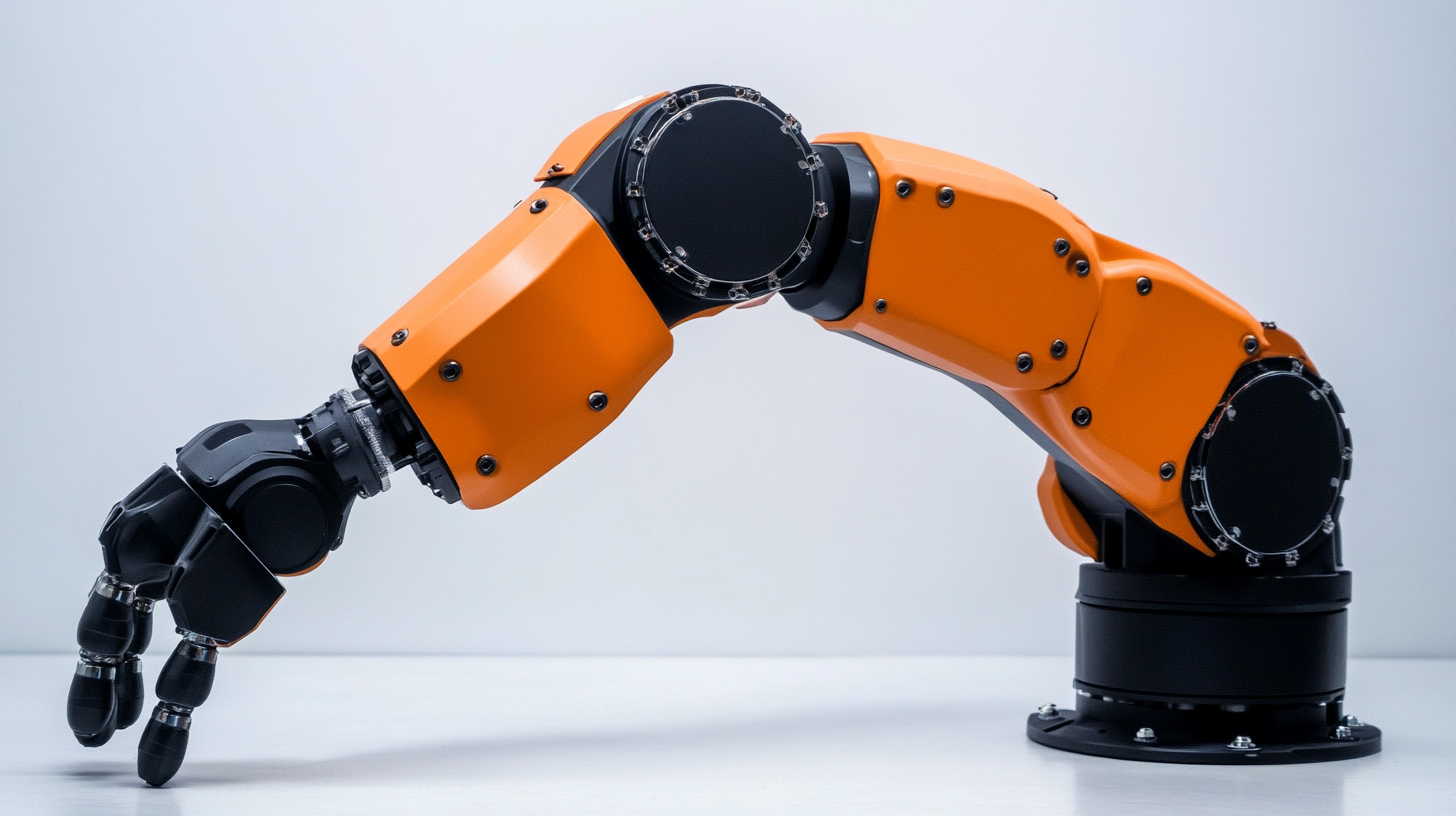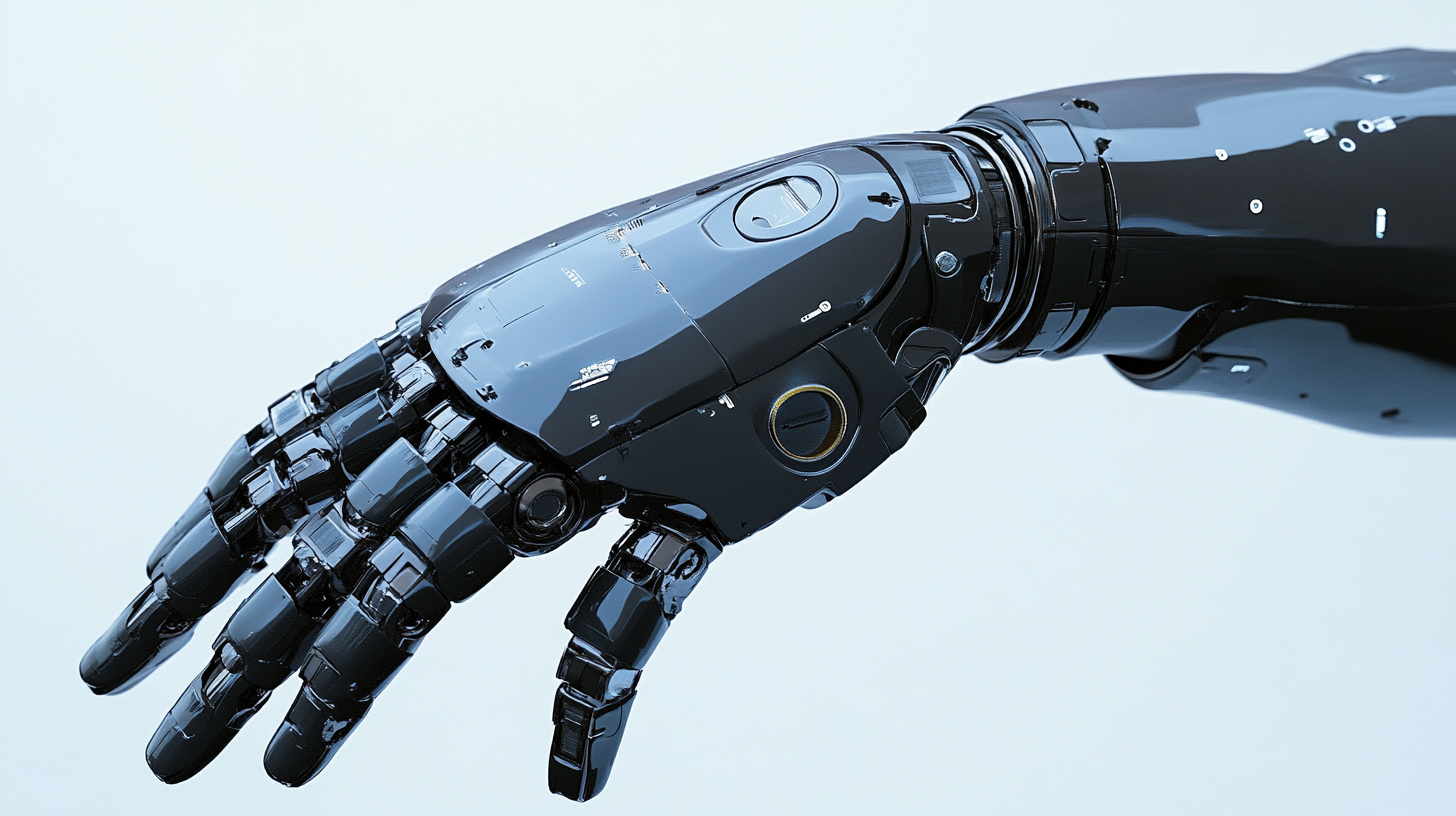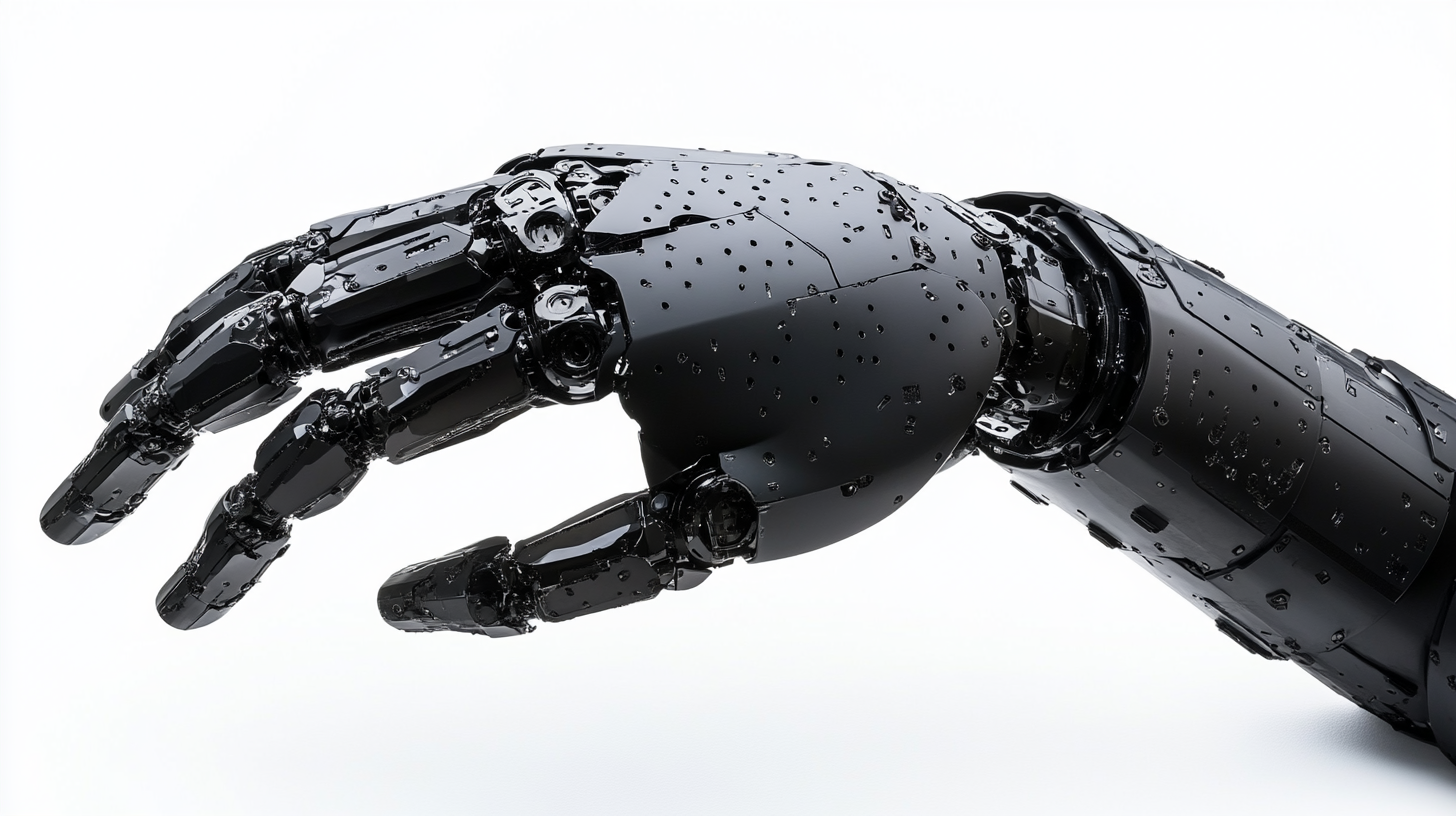Use it to plan your own robot barista payback period.

Want to know more details?
Please, contact your manager.
Aleksandr Maksimovich
Business Development Manager
Nalarobot Robotics | Nalarobot Café
Mobile: +375 333 760 460
(WhatsApp | Telegram | Viber)
BLOG
Essential Insights for Sourcing the Best Universal Robotic Arm in Today's Market
In today’s rapidly evolving automation landscape, the demand for Universal Robotic Arms has surged, reflecting a significant shift towards adaptable and versatile manufacturing solutions. According to a report by Markets and Markets, the global industrial robotics market is expected to reach USD 60 billion by 2026, driven by advancements in smart manufacturing. Universal Robotic Arms play a pivotal role in this growth, offering unparalleled flexibility and efficiency across various applications—from assembly and packaging to inspection and quality control. Companies that invest in the right robotic solutions stand to gain a competitive edge, optimizing not only productivity but also operational resilience.
As businesses across industries seek to automate processes and enhance productivity, the challenge lies in sourcing the best Universal Robotic Arm that aligns with specific operational needs. A study by the International Federation of Robotics highlights that between 2019 and 2021, global sales of industrial robots grew by an impressive 10%, underscoring the urgency for companies to integrate advanced robotic technologies. This blog aims to provide essential insights to help decision-makers navigate the vast array of options available, ensuring they choose the most effective Universal Robotic Arm tailored to their unique requirements.

Key Factors to Consider When Choosing a Universal Robotic Arm
When choosing a universal robotic arm, several key factors must be considered to ensure that the selected model meets your operational needs effectively. One of the most critical aspects is the arm's payload capacity. Depending on the tasks it will perform, the robotic arm should be able to handle the required weight comfortably without compromising performance. For applications involving heavy lifting or intricate tasks, selecting a model with an appropriate payload specification becomes imperative to enhance efficiency and productivity. Another significant factor is the range of motion offered by the robotic arm. A model with a wide range of motion can maneuver through complex tasks with ease, making it suitable for a diverse set of applications. Pay attention to the degrees of freedom; more joints typically lead to greater flexibility and precision in movement. This aspect is especially vital in environments that demand intricate assembly processes or delicate handling of components. Additionally, the compatibility with existing systems is crucial. Before making a purchase, verify if the robotic arm can integrate seamlessly with your existing machinery and software. This compatibility can mitigate additional costs related to retrofitting and lead to smoother operational workflows. Furthermore, consider the manufacturer’s support and training offerings, as having access to proper guidance can significantly enhance the arm's utility and your team's confidence in using the technology.

Understanding the Different Types of Universal Robotic Arms Available
When navigating the landscape of robotic automation, understanding the various types of universal robotic arms available is crucial for making an informed decision. Market research conducted by Allied Market Research indicates that the global industrial robotics sector is expected to reach over $70 billion by 2027, emphasizing the increasing demand for versatile and adaptable robotic solutions. Universal robotic arms, which are a cornerstone of this growth, come in several forms—each designed to cater to specific applications and operational requirements.
One of the most popular types is the collaborative robot, or cobot. This category accounts for a significant share of the market due to its ability to work alongside human operators safely. According to a report by Research and Markets, the collaborative robot market is projected to grow at a compound annual growth rate (CAGR) of 45% from 2021 to 2026. These arms are designed with advanced sensors and safety features, allowing them to perform tasks such as assembly, packaging, and quality inspection without the need for cumbersome safety barriers.
Another prominent type is the traditional industrial robotic arm, which is typically characterized by its high payload capacity and precision. These arms are often used in manufacturing environments for heavy-duty tasks like welding, painting, and material handling. The International Federation of Robotics highlighted that in 2021, approximately 2.7 million industrial robots were operating globally, with a significant portion dedicated to automotive and electronics industries. Heavy-duty robotic arms are essential for enhancing productivity and efficiency, especially in high-volume production settings.
Lastly, the advancement of modular robotic solutions is becoming increasingly relevant. These robots can be reconfigured for various tasks, making them highly adaptable to changing manufacturing needs. A study by Technavio forecasts that the demand for modular robotic systems will grow by over 10% from 2023 to 2027, as businesses look for flexibility and cost-effectiveness in their automation strategies. This adaptability is particularly valuable in industries facing rapid technological changes and the need for customized solutions.
By exploring these various types of universal robotic arms, businesses can better align their operational goals with the right technology, ensuring a competitive edge in today’s fast-paced market.

Evaluating the Technological Features and Benefits
When sourcing the best universal robotic arm in today's market, it's crucial to evaluate the technological features that define their performance and usability. Robotic arms come equipped with various levels of precision, range of motion, and payload capacities that determine their applicability in different industries. For instance, some arms are designed for high-speed assembly tasks, while others excel in delicate applications such as electronics assembly or medical operations. Understanding these specifications will enable you to select an arm that aligns with your operational needs.
Another pivotal factor is the integration capabilities of the robotic arm. Many modern models support seamless integration with existing systems, including machine vision and artificial intelligence algorithms, which enhance their functionality. Features like programmable logic controllers (PLCs) and open-source software compatibility allow for easier customization to cater to specific tasks. Additionally, assessing the arm's communication protocols—such as Ethernet/IP or Profinet—can provide insights into its interoperability with other equipment on the shop floor.
Moreover, it’s essential to consider the benefits that advanced safety features bring to the table. Many contemporary robotic arms are designed with collaborative capabilities, enabling them to work alongside human operators safely. Technologies like force-sensing and emergency stop functions enhance workplace safety while improving operational efficiency. Thus, evaluating technological features and benefits not only helps in choosing the right robotic arm but also ensures a robust and harmonious integration into your production workflow.

Assessing Value for Money: Cost vs. Performance
When sourcing a universal robotic arm in today's competitive market, it’s crucial to weigh the value for money by scrutinizing cost against performance. The robotic arm you choose should not only fit within your budget but also meet the specific needs of your applications. Low-cost options may seem attractive initially, but without adequate performance capabilities, they could lead to greater inefficiencies and higher long-term costs.
Performance metrics such as payload capacity, precision, speed, and ease of integration can significantly impact your operational workflow. A robotic arm that excels in these areas can facilitate smoother production processes, reduce downtime, and enhance overall productivity. Therefore, it’s essential to conduct thorough research and compare different models, looking closely at how they perform against their price tags. Investing a little more upfront in a higher-performing arm can yield substantial returns by minimizing the risks associated with underperformance.
Additionally, consider the reliability and support offered by manufacturers. A cheaper robotic arm may come with limited warranties and support, which can be a disadvantage in the long run. Understanding the total cost of ownership, including maintenance and support, will help you make a more informed decision. A balanced assessment of cost versus performance ensures that you select a universal robotic arm that effectively meets your operational demands while providing value for your investment.
Exploring Future Trends in Robotic Arm Development
As we delve into the future trends in robotic arm development, it is essential to recognize the continuous integration of advanced technologies that are shaping the industry. One prominent trend is the increasing use of artificial intelligence and machine learning in robotic arms. These technologies enable robots to learn from their environments, adapt to new tasks, and enhance operational efficiency. This evolution is paving the way for more sophisticated automation in various sectors, from manufacturing to healthcare, where precision and reliability are paramount.
Another key development is the trend toward modular designs in robotic arms. Manufacturers are recognizing the need for adaptable solutions that can be customized based on specific operational requirements. Modular robotic systems allow businesses to easily upgrade or modify their equipment without significant investment, thus enhancing flexibility and longevity. This approach is particularly appealing to small and medium-sized enterprises seeking to optimize production without the need for an entirely new investment.
Moreover, advancements in materials science are leading to lighter, stronger, and more durable robotic arms. New materials enable the creation of robots that not only perform tasks with greater dexterity but also have enhanced operational ranges. These innovations are paving the way for robotic arms to be deployed in environments that were previously deemed too challenging, further expanding their potential applications across various industries. With these trends on the rise, the future of robotic arm technology looks promising, revealing new opportunities for efficiency and innovation in automation.

